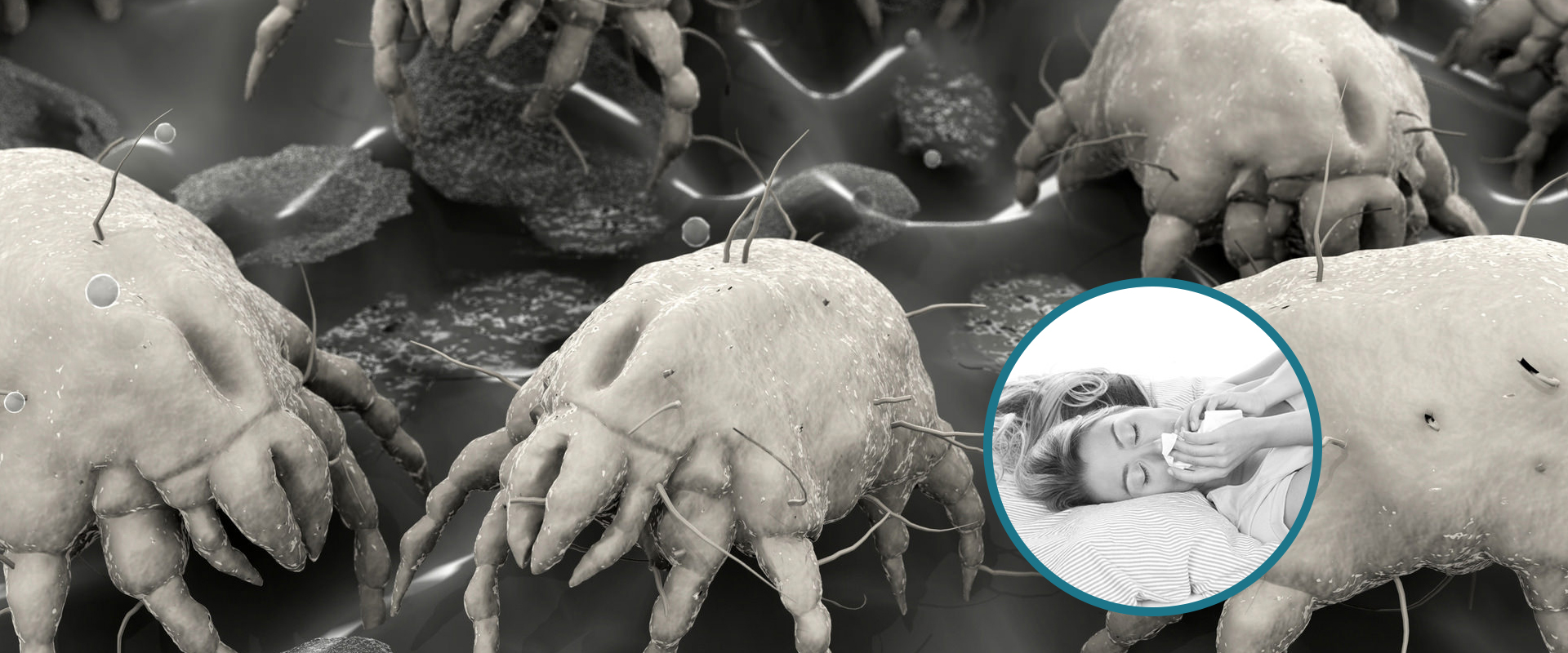YOU’RE NOT SLEEPING ALONE
House dust mites are microscopic skin-eaters that prefer to eat flakes of shed human skin. Beds offer mites the best living conditions — they are pleasantly warm and moist, and are an ample source of food. Over 90% of mites in our homes are therefore found in mattresses, duvets and pillows.
HOUSE DUST MITES CAUSE ILLNESS
House dust mites are among the commonest triggers of allergic respiratory diseases worldwide. In Asia, they are the number one trigger of allergies, but many sufferers do not know that house dust mites cause their symptoms. In addition to the proteins from the bodies of dead and decayed mites, both the eggs laid by female mites and the mites’ feces have a high potential to cause allergies. The allergenic particles from decayed mite feces, mite remains and mite eggs are deposited on the skin and mucous membranes in the eyes, nose and lungs. An allergic reaction to mite allergens can be seen through reactions in the airways, eyes or skin. In addition, sleep is significantly affected by the high level of exposure to allergens in the bed, which reduces performance during the day.
WHEN DO SYMPTOMS APPEAR? A HOUSE DUST MITE ALLERGY IS NOT A TRIVIAL DISEASE AND CAN LEAD TO ASTHMA
A house dust mite allergy often goes unnoticed for years and is in many cases confused with a harmless cold. An untreated mite allergy can lead to chronic diseases, and can also develop into asthma if the inflammation of the upper airway reaches the lower airway. Asthma is not curable, but allergic asthma is preventable with early treatment.
To prevent asthma, first check your symptoms to see, whether you could be suffering from a dust mite allergy.
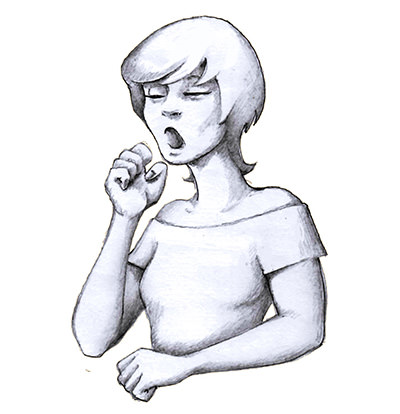
GENERAL CONDITION
Mite allergies also affect sufferers’ general state of health. If you have a restless night’s sleep and your immune system initiates an immune response, you will feel unwell during the day. This will affect you at work, school and in your everyday life. Allergies can affect your general state of health in the following ways:
- Frequent tiredness
- Headache
- Lack of concentration
- Weakness
- Generell feeling of being unwell

NOSE
The first stage of a mite allergy mainly affects the upper airways, resulting in typical cold symptoms. The symptoms are worse at night and in the morning, when making your bed or vacuuming and generally in warm periods. Symptoms include:
- Sneezing fits
- Blocked nose
- Runny, burning nose
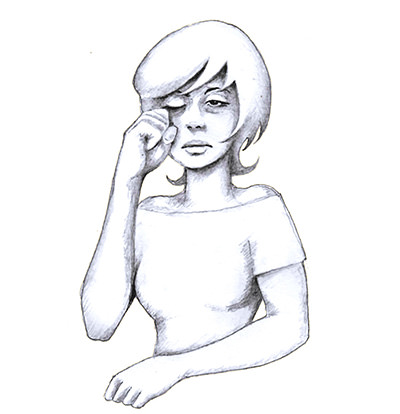
EYES
The sensitive conjunctiva of the eye reacts on contact with an allergen, producing symptoms of inflammation that are very uncomfortable for the person concerned and primarily occur in the morning after getting up. These symptoms include:
- Itchy eyes
- Burning eyes
- Red eyes
- Teary eyes

LUNGS
During the later stage of a mite allergy, the condition progresses to the lower airways. If the allergic reaction develops to involve the lungs, it can result in chronic asthma. The symptoms may be particularly noticeable at night and/or in the morning, and include:
- A need to cough
- Sore throat
- Coughing fits
- Breathlessness (in the case of asthma)
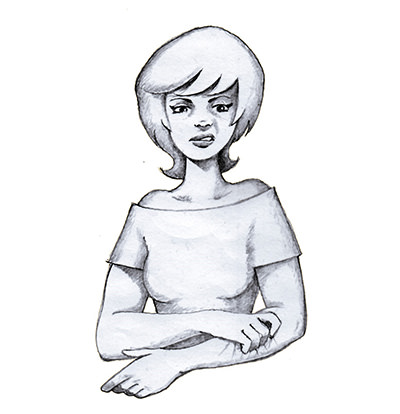
SKIN
Mites can be a trigger factor for neurodermatitis. On contact with an allergen, the allergic reaction may therefore also be visible on the skin. There may not necessarily be any simultaneous symptoms affecting the airways. If your child or a family member suffers from neurodermatitis, a mite allergy test is always recommended. The typical symptoms of neurodermatitis are:
- Dry, scaly skin
- Weeping skin rashes
- Red, itchy skin
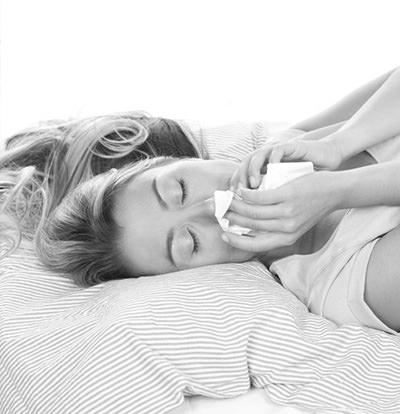
LOCATION AND TIMING OF THE SYMPTOMS
Do your symptoms not appear the same everywhere, or do they deteriorate or improve depending on the time of day and the location? You can record your symptoms in an allergy diary to determine any regular patterns. A mite allergy is an “indoor allergy” — symptoms improve, for example, in fresh air, by the sea and in the mountains at above 1200 m.
Symptoms are worse:
- At night/in the morning
- In your bed/bedroom
- In rooms with carpets and upholstered furniture
- When vacuuming
- When making your bed
- In cold seasons
- In heated rooms
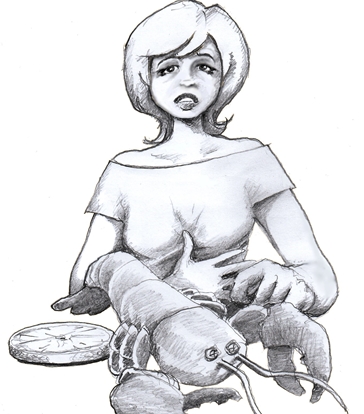
SHELLFISH
Crustaceans and mollusks contain the same allergen (tropomyosin) as house dust mites, which is why both allergies often occur at the same time. Shellfish allergies are also triggered by mites, so people who suffer from a shellfish allergy should also consider that they may be affected by a mite allergy. Have you noticed one or more of the following symptoms after consuming or coming into contact with shellfish?
- Stomach pain, belching, nausea, vomiting
- Itching on the neck and in the throat
- Swelling of the mouth and throat
- Skin inflammation and itching
- Eczema, skin rash, skin irritation, reddening of the skin
- Allergic rhinitis, runny nose
- Red eyes, tears
- In extreme cases, tightness in the chest, shortness of breath

ARE THERE ANY ALLERGY SUFFERERS IN YOUR FAMILY?
If anyone in your family suffers or suffered from an allergy, the likelihood that you will also have an allergy increases as follows:
- Both parents have very strong allergies: 60-80%
- Both parents have allergies: 40-60%
- One parent or a sibling has allergies: 20-40%
- No family member has allergies: 5-15%
WHEN DO SYMPTOMS APPEAR?
People with a house dust mite allergy suffer from symptoms all year round. These symptoms are worse at night and in the morning after getting up because beds contain a large number of mite feces and mite eggs. The symptoms are also worse when making the bed or vacuuming because the mite allergens are swirled up and inhaled.
SUSPECTED HOUSE DUST MITE ALLERGY: ARE YOU AFFECTED TOO?
If you suspect that you have a house dust mite allergy, you can take immediate measures to reduce your exposure to allergens. It is also possible to have a special allergy test carried out by the doctor or in a medical laboratory. Several testing procedures are available, e.g. prick tests or blood tests.
